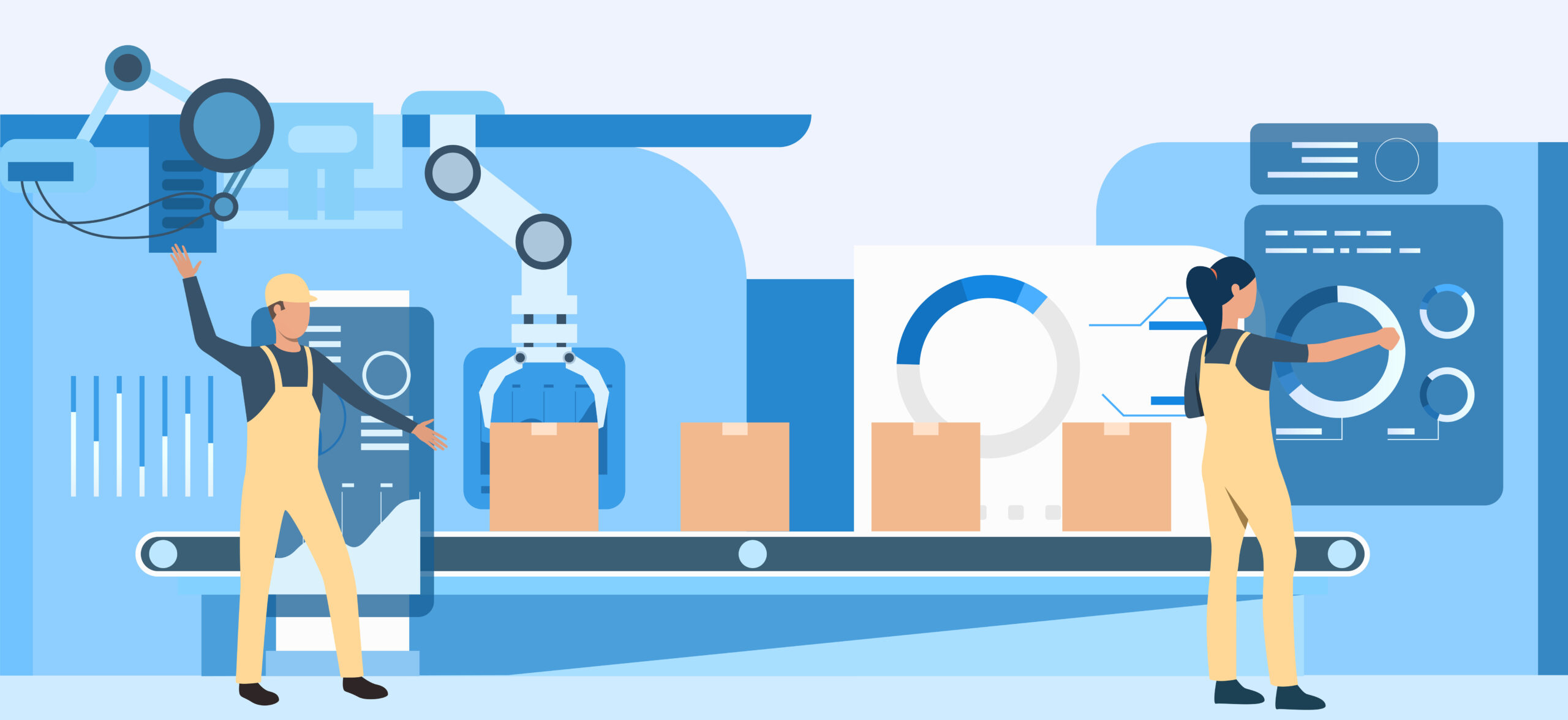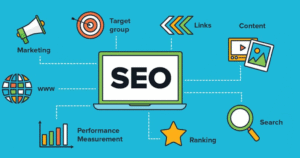AI in Manufacturing: Benefits, Challenges, and Real-World Examples
IntroductionThe rise of AI in manufacturing is ushering in a new era of smart production, predictive intelligence, and data-driven decision-making....

Introduction
The rise of AI in manufacturing is ushering in a new era of smart production, predictive intelligence, and data-driven decision-making. As manufacturers face growing pressures to optimize efficiency, reduce waste, and enhance quality, artificial intelligence has emerged as a powerful enabler. But as with any transformative technology, it comes with its own set of challenges. In this blog, we’ll break down the key benefits, real-world examples, and the challenges that businesses must address to succeed with AI in manufacturing.
What Does AI in Manufacturing Mean?
AI in manufacturing refers to the application of machine learning, computer vision, robotics, and predictive analytics to automate, optimize, and enhance various industrial processes. These technologies analyze data in real time, allowing machines and systems to learn, adapt, and make decisions without direct human intervention.
From quality control and supply chain forecasting to predictive maintenance and smart robotics, AI is transforming how factories operate.
Key Benefits of AI in Manufacturing
1. Improved Operational Efficiency
AI algorithms process data from sensors, machinery, and production lines to identify inefficiencies and bottlenecks. This leads to faster cycle times, reduced material waste, and more streamlined operations.
AI systems can automatically adjust parameters in real time to maintain optimal performance—resulting in significant productivity gains.
2. Predictive Maintenance
Instead of relying on fixed maintenance schedules, manufacturers now use AI to monitor equipment health and predict failures before they occur. This reduces unplanned downtime and lowers maintenance costs.
Predictive models analyze historical and real-time data to flag potential problems early, keeping operations running smoothly.
3. Enhanced Product Quality
AI-powered computer vision systems are used to detect defects, inconsistencies, or deviations in products that are often missed by human eyes. Automated quality control leads to fewer product recalls, reduced waste, and increased customer satisfaction.
These systems operate 24/7, ensuring consistent, scalable quality assurance.
4. Data-Driven Decision-Making
AI enables manufacturers to make proactive decisions based on insights derived from real-time data. Whether it’s optimizing production schedules or adjusting supply chain operations, data-backed decisions lead to better results.
Executives and plant managers can use AI dashboards to understand production KPIs and react instantly to disruptions.
5. Personalization and Customization at Scale
With AI, manufacturers can implement flexible production lines that adapt to small-batch and customized orders. AI analyzes customer data, order trends, and design specs to personalize products while keeping costs low.
This agility gives companies a competitive edge in dynamic markets.
6. Sustainability and Energy Efficiency
AI systems can track and optimize energy usage across the factory floor. From smart lighting and HVAC controls to machine-level power consumption analytics, AI helps manufacturers reduce their carbon footprint and operating costs.
Real-World Examples of AI in Manufacturing
General Electric (GE)
GE uses AI to monitor sensor data from gas turbines, jet engines, and other industrial machines. Through its “Digital Twin” technology, GE creates AI-driven simulations that predict wear and failure, saving millions in maintenance costs.
Siemens
Siemens integrates AI into its smart factory infrastructure to automate production planning and quality control. Their AI systems adapt in real time to changes in order volume, material availability, and labor shifts.
BMW
BMW employs AI in visual inspection systems for paint and surface quality. AI detects imperfections faster than humans and recommends adjustments to robotic painting arms on the fly.
Unilever
Unilever uses machine learning algorithms for demand forecasting and inventory optimization across its global supply chain. AI helps balance supply and demand more accurately, reducing product shortages and overstocking.
Foxconn
As one of the world’s largest electronics manufacturers, Foxconn uses AI to detect microscopic defects in semiconductors during production, improving accuracy and minimizing waste.
Common Challenges of Implementing AI in Manufacturing
Despite its benefits, implementing AI in manufacturing comes with real hurdles that must be strategically managed.
1. High Initial Costs
Deploying AI solutions requires significant investment in hardware (sensors, edge devices), software (AI platforms, analytics tools), and skilled talent. ROI may take time to realize, especially for small to mid-sized manufacturers.
2. Data Quality and Integration Issues
AI is only as good as the data it learns from. Inconsistent, siloed, or poor-quality data can lead to inaccurate predictions and decisions. Integrating AI with legacy systems is another common challenge.
3. Skilled Workforce Shortage
AI implementation demands data scientists, machine learning engineers, and automation experts. Many manufacturers struggle to recruit and retain talent with these advanced skill sets.
4. Cybersecurity Risks
As factories become more connected, they are exposed to cyber threats. AI systems must be secured against attacks that could compromise sensitive data or disrupt production.
5. Change Management and Resistance
AI often changes long-standing workflows, leading to resistance from employees and managers. Success depends on creating a strong change management plan and reskilling teams.
Overcoming the Challenges: Best Practices
To maximize the ROI of AI in manufacturing, companies should:
- Start small: Begin with a pilot project like predictive maintenance or visual quality control.
- Ensure data readiness: Invest in data infrastructure, cleansing, and integration.
- Train and reskill workers: Offer training to help employees work alongside AI systems.
- Focus on cybersecurity: Implement strong authentication, encryption, and monitoring tools.
- Collaborate with experts: Work with AI consultants or service providers for faster, smoother adoption.
The Future of AI in Manufacturing
As AI technologies mature and become more accessible, the barriers to entry will continue to fall. Edge AI, generative design, and reinforcement learning will further reshape how manufacturers approach production, supply chains, and product development.
With 5G, IoT, and cloud computing acting as accelerators, the future of manufacturing will be intelligent, agile, and deeply interconnected—driven by AI at its core.
Conclusion
AI in manufacturing is no longer just an innovation—it’s a necessity. Companies that adopt AI are gaining efficiency, improving product quality, and reducing downtime, while those that delay risk falling behind.
While there are challenges in adoption, a well-planned strategy, starting with high-impact use cases and a commitment to reskilling, can pave the way for scalable success. The examples of global leaders like Siemens, BMW, and GE show that AI is already delivering real-world impact.
Whether you’re optimizing production lines or building a fully autonomous factory, now is the time to explore how AI can elevate your manufacturing operations.





